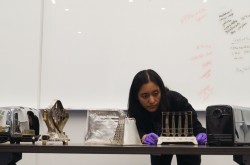Electric Radio
This article was originally written and submitted as part of a Canada 150 Project, the Innovation Storybook, to crowdsource stories of Canadian innovation with partners across Canada. The content has since been migrated to Ingenium’s Channel, a digital hub featuring curated content related to science, technology and innovation.
The freedom from batteries.
Today the name Rogers is synonymous with communication in Canada. While most associate the surname with the tv and mobile empire, the first man behind the name was a radio guy. And not just any radio guy. In 1925, Edward Rogers Sr. developed the first commercially viable all-electric radio in Toronto, Ontario. The tireless inventor also created an adaptor set that made it possible for owners of old sets to throw away their batteries and plug their radios into the nearest light socket. Radio batteries weren’t like today’s small, powerful varieties. Before young Ted’s all-electric set came along, radios were powered by bulky rechargeable batteries that stained rugs and floors with leaking acid. Their annoying background hum also marred reception and sound quality. The Rogers Experimental Tube15S—a vacuum tube for radio—enhanced the sound quality of radio, made the fledgling medium a dependable one, and shaped the future of communications not just in Canada but around the world. And within only ten years, the leaky radio battery was nothing but an unpleasant memory.














